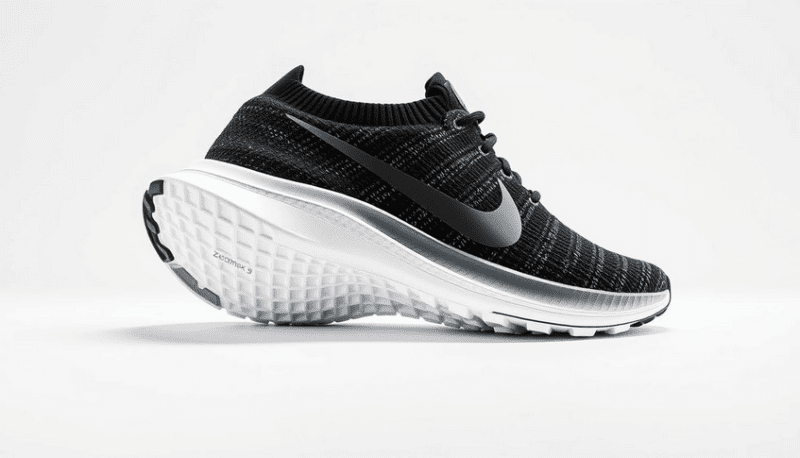Embarking on a half marathon is no small feat. Many believe it's just half the challenge of a full marathon, but seasoned runners understand that this 13.1-mile journey demands its unique blend of stamina, speed, and mental grit.
With years of distance running coaching under my belt, I've seen raw beginners blossom into accomplished half-marathoners, proving that with the right guidance, this mountain can be scaled by anyone hungry for the challenge.
The key to crossing that finish line in triumph come 2024 lies in a crafted blend of preparation and knowledge—the same formula I've used to guide countless runners toward their goals.
This article unfolds the map to your half marathon success; from selecting shoes that seem to whisper encouragement with every stride to understanding why Brooklyn's streets might just unfold the most exhilarating run of your life.
Keep reading; this could be the starting line for one extraordinary adventure.

Key Takeaways
- Choose a suitable race date that aligns with your training schedule and personal commitments, keeping in mind the importance of rest days in your training plan.
- Find comfortable running gear, including supportive shoes, moisture-wicking clothing, and proper socks to prevent blisters, and consider using anti-chafing products for added comfort during the run.
- Incorporate cross-training into your schedule by engaging in activities like swimming or cycling to improve overall strength and prevent injuries while maintaining fitness without overloading your legs.
- Pay attention to race day nutrition by fueling your body with a balanced diet rich in carbohydrates, proteins, and healthy fats, and staying hydrated before and during the race.
Preparing for the Half Marathon

Choose a race date that aligns with your training schedule and goals. Set a proper training schedule, find suitable running gear, recruit a training partner, plan for 5k and 10k races, and train on different surfaces to prepare for the half marathon.
Choose a Race Date

Picking your race is a big step. Look at events like the Run Oak Island 2024 or the Life Time Chicago Spring Half Marathon set for May 19, 2024. These races give you enough time to get ready and offer different distances if you want to start with shorter runs first.
Make sure the date fits well with your schedule so training isn't too stressful.
After marking down the day on your calendar, it's time to plan how you'll train for that distance. This means setting up a half marathon training schedule that suits your life and goals, keeping in mind rest days are as key as running days.
Next up? Let's talk about getting into a solid training groove!
Set a Training Schedule

Prepare for the half marathon by setting a training schedule. Here are some key points to consider:
- Choose a suitable race date that aligns with your training timeline and personal commitments.
- Map out a structured training plan, incorporating gradual mileage increases and rest days.
- Include a mix of long runs, tempo runs, speed workouts, and recovery runs in your schedule.
- Plan to cross-train on non-running days to enhance overall fitness and prevent injury.
- Schedule time for proper warm-ups, cool-downs, and stretching sessions after each run.
- Consider participating in 5k and 10k races as part of your training program to gauge progress.
- Assess your weekly availability and adapt the training schedule accordingly.
Find Suitable Running Gear
After setting a training schedule, it's essential to find suitable running gear for your half marathon journey. Look for comfortable and supportive running shoes that fit well. Invest in moisture-wicking clothing to keep you dry during long runs.
Consider wearing a good quality sports bra for women or a supportive top for men. Don't forget about proper socks to prevent blisters and chafing on race day. Additionally, consider using anti-chafing products or body glide to avoid discomfort during the race.
When choosing running gear, make sure to prioritize comfort, support, and moisture-wicking materials for an enjoyable and smooth-running experience throughout your training and on race day.
Recruit a training partner

Finding a training partner for your half-marathon journey can provide motivation, support, and accountability. Look for someone who shares similar fitness goals and running pace to train together effectively.
Training with a partner can make long runs more enjoyable and help you stay consistent with your workouts. A committed training buddy can also offer encouragement on tough days and celebrate achievements with you, fostering a positive and supportive training environment.
Plan for 5k and 10k races
Plan for 5k and 10k Races

When preparing for the half marathon, plan to participate in 5k and 10k races to build endurance and race experience. Consider these tips:
- Participating in shorter races will help you understand the race atmosphere and familiarize yourself with pre-race routines.
- Completing a 5k and 10k will provide a confidence boost as you progress through your training regimen.
- The experience gained from shorter races will help refine your pacing strategy for the half marathon.
- It's an excellent opportunity to test your running gear, nutrition, and hydration during these races.
- Engaging in shorter races can add variety to your training routine, providing an opportunity to work on speed and pacing strategies.
Train on Different Surfaces
After planning for 5k and 10k races, it's essential to train on different surfaces to prepare for a half marathon. Incorporating varied terrains like roads, trails, and tracks into your training can help improve balance, stability, and overall muscle strength.
Running on different surfaces also reduces the risk of overuse injuries by engaging different muscles and preventing repetitive strain.
Training on various surfaces provides opportunities to adapt to changing conditions that may arise during the half marathon race. It helps runners become more versatile and confident in handling diverse terrains they might encounter on race day, ultimately enhancing their overall performance and endurance.
Tips for Half Marathon Training

Incorporate cross-training into your training schedule to improve overall fitness and prevent injury.
Vary Your Runs

To improve your half marathon training, vary your runs. Varying your runs can help prevent boredom and overuse injuries. Here are some ways to vary your runs:
- Include interval training to improve speed and endurance.
- Incorporate hill workouts to build strength and power in your legs.
- Add tempo runs at a comfortably hard pace to improve lactate threshold.
- Mix up the terrain by running on trails, tracks, and roads.
- Try fartlek runs, alternating between fast and slow segments for flexibility in pacing.
Incorporate cross-training
To boost your half marathon training, incorporate cross-training into your schedule. It's essential for building overall strength and preventing injuries. On these days, engage in activities like swimming, cycling, or yoga to give your running muscles a break while staying active.
Cross-training helps you maintain fitness and stamina without overloading your legs. This diverse approach can improve endurance, reduce the risk of overuse injuries, and keep workouts fun and engaging.
Plus, it allows certain muscle groups recovery time while others are working. Now that you've got cross-training covered, let's move on to practicing race-day nutrition as part of your half-marathon preparation.
Practice Race Day Nutrition

Prepare for race day nutrition by fueling your body properly. A balanced diet with carbohydrates, proteins, and healthy fats is essential for long-distance running. During training, experiment with different foods to determine what works best for you.
On race day, eat a light meal about 2-3 hours before the start time. This could include oatmeal, bananas, or toast with peanut butter. Stay hydrated throughout the race by drinking water and consider using energy gels or sports drinks for added endurance.
After considering race day nutrition, it's important to focus on mental tips and strategies to prepare your mind for the half marathon challenge.
Listen to Your Body and Rest Properly

Pay attention to your body’s signals during training and on race day. If you feel pain or excessive fatigue, take a break and allow yourself time to recover. Adequate rest is crucial for muscle repair and overall recovery.
Don’t ignore the signs of overtraining - it can lead to injuries and burnout, hindering your half-marathon preparation.
Remember that rest is an essential part of your training plan. Make sure to include rest days between your runs for optimal performance and injury prevention.
Use a Training Plan
Having learned to listen to your body and rest properly, using a training plan is crucial for half marathon preparation. Here's how it can help you:
- A training plan helps structure your workouts, ensuring you build endurance gradually.
- It guides essential elements like long runs, speed work, and recovery days.
- Tailored plans exist for varying skill levels - whether you're a beginner or an experienced runner.
- Following a plan reduces the risk of overtraining or undertraining, aiding injury prevention.
- It keeps you focused on your goal, tracking progress as race day approaches.
- Many plans incorporate cross-training days to improve overall fitness and strength.
- You can find online resources offering free or paid training plans tailored to half marathon distances.
- Some event organizers provide official training schedules designed specifically for their races.
- Adapting the plan according to your schedule ensures flexibility while maintaining consistency.
- A well-structured plan can boost confidence and mental preparedness for the race day challenge.
Race Day Preparation

Plan your race attire and gear, ensuring that you have comfortable clothing, proper running shoes, a hydration pack or belt, and any necessary fuel for the race.
Plan Your Race Attire and Gear
Prepare for race day by ensuring you have the right clothes and gear for running your half marathon in 2024. Here's what you need:
- Choose moisture-wicking clothing to keep you dry during the run.
- Pick comfortable running shoes that are broken in and suitable for long distances.
- Wear compression socks or sleeves to help with circulation and reduce muscle fatigue.
- Use a well-fitted sports bra for women to ensure comfort and support during the run.
- Consider wearing a hat, visor, and sunglasses to shield your eyes from the sun.
- Carry a water bottle or hydration pack to stay hydrated throughout the race.
Fuel your body properly
As you plan your race attire and gear, focusing on fueling your body properly for the half marathon is crucial. Your nutrition plays a significant role in your performance. Ensure you consume a balanced diet with carbohydrates, proteins, healthy fats, and hydration.
Incorporate foods like whole grains, lean proteins, fruits, vegetables, and nuts into your meals to support your training regimen effectively.
On race day, aim to eat a familiar breakfast rich in complex carbs and moderate in protein about 2-3 hours before the start time to facilitate sustained energy levels during the run.
Study The Course
Before participating in a half marathon, it's crucial to study the course. Familiarize yourself with the race route, including any uphill or downhill sections, so you can adjust your training accordingly.
Knowing the terrain will help you plan your pacing and conserve energy for challenging segments. Additionally, understanding where aid stations are located can assist in strategizing hydration and nutrition during the race.
Take advantage of opportunities to preview different parts of the course through organized running events or by using mapping apps like Strava or MapMyRun.
After studying the course, it's time to plan your race day attire and gear to ensure you're fully prepared for an optimal performance. Researching and understanding the details of your upcoming race is key to feeling confident on race day and improving your overall experience.
Mental Tips and Strategies

Set a realistic pace goal and train your mind for long runs. Stay positive motivated, and aim for negative splits during the race. Overcome any negative thoughts that may arise during the race.
Read more about mental tips and strategies to prepare for your half marathon in 2024!
Set a Realistic Pace Goal
When preparing for a half marathon, it's crucial to set a realistic pace goal that aligns with your training and fitness level. Consider factors such as the race course, weather conditions, and your own running experience when setting this goal.
It's essential to find a balance between pushing yourself and avoiding burnout during the race. By setting a realistic pace goal, you can improve your overall performance and increase your chances of completing the half marathon successfully.
Remember to take into account any previous races or long runs you've completed when setting your pace goal for the half marathon. Also, consider pacing strategies like aiming for negative splits or maintaining an even pace throughout the race.
Train Your Mind for Long Runs
To conquer long runs in a half marathon, mental preparation is key. Visualize yourself completing the distance and crossing the finish line successfully. Break down the race into smaller segments to make it more manageable mentally and focus on one mile at a time.
Use positive affirmations to stay motivated throughout your training and on race day. Engage in mindfulness or meditation practices to build mental endurance and learn how to manage discomfort during long runs.
Stay committed to your training plan, even when it gets tough, as building mental resilience takes time. Surround yourself with supportive friends and family who can help keep you motivated during challenging moments of your training journey for the half marathon event.
Stay Positive and Motivated
Training your mind for long runs is essential for a successful half marathon. Visualize yourself crossing the finish line and achieving your goal. Remind yourself of your progress during training, and stay motivated by focusing on the reasons that inspired you to run in the first place.
Embrace positive self-talk and celebrate each milestone, whether it's running a new distance or completing a challenging workout. Joining a running group or finding a supportive community can help boost your motivation and keep you accountable throughout your training journey.
Maintaining a positive mindset will not only make the training process more enjoyable but also bolster your mental strength during the race itself. When doubts start creeping in, remind yourself of all the hard work you've put in to prepare for this event, allowing positivity to carry you through every stride towards the finish line.
Aim for Negative Splits
While it's vital to stay positive and motivated during your half marathon, aiming for negative splits can also enhance your performance. Negative splits involve running the second half of your race faster than the first.
It helps conserve energy and prevents burnout early in the run. By starting at a comfortable pace and gradually increasing speed, you can finish strong and with better timing.
To achieve negative splits, start conservatively during the initial miles to warm up your body. Then, gradually increase your pace as you progress through the race. This strategy will help you maintain strength for the latter part of the run, giving you a stronger finish.
Overcome Negative Thoughts During the Race
Stay focused on the present moment. Shift your focus to your breath and the rhythm of your strides. Remind yourself of your training and preparation, boosting confidence in completing the race successfully.
Use positive self-talk and affirmations to counter any negative thoughts during the run.
Visualize crossing the finish line strong and proud, reinforcing a sense of accomplishment. Break down the race into smaller segments or landmarks, setting mini-goals along the way.
Conclusion

In conclusion, running a half marathon in 2024 requires careful planning and preparation. Choose a race that suits your schedule and begin training with a structured plan. Pay attention to mental strategies and race day preparations to ensure a successful experience on the big day.
Remember to stay motivated and positive throughout your training journey for the half marathon next year!
Recent Featured Articles:
Topo Athletic Women's Cyclone Running Shoes Review: 2024
10 Best Shoes for Health Care Workers 2024
Beginners Guide to 5k Running 2023
FAQs
1. What must I know to run a half marathon in 2024?
To run a half marathon in 2024, you should follow a half marathon training program designed for beginners that includes fitness training, running tips, and schedule management. It's also important to register for the event early.
2. How long is a half marathon and how can I prepare?
A half marathon distance is 13.1 miles. Prepare by building your endurance with long-distance running based on a structured running schedule and include athletic performance training specific to your needs.
3. What kind of gear do I need for half marathon running?
You will need comfortable running shoes suited for long distances, appropriate clothing, and other essential gear like water bottles or belt packs designed specifically for endurance running events like half marathons.
4. Can you give me some race day strategies for my first-ever Half Marathon event?
Sure! Start with making sure your nutrition plan supports your energy levels throughout the race day, stick to the pace set during your training sessions, listen carefully during registration instructions, and enjoy the experience of participating in such an exciting distance-running event!
5. Why is it important to have good shoes when I train for my Half Marathon Running?
Good shoes are vital because they offer support and cushioning that help prevent injuries during intense sessions of half-marathon fitness training as well as on actual race days where optimal performance is targeted.



